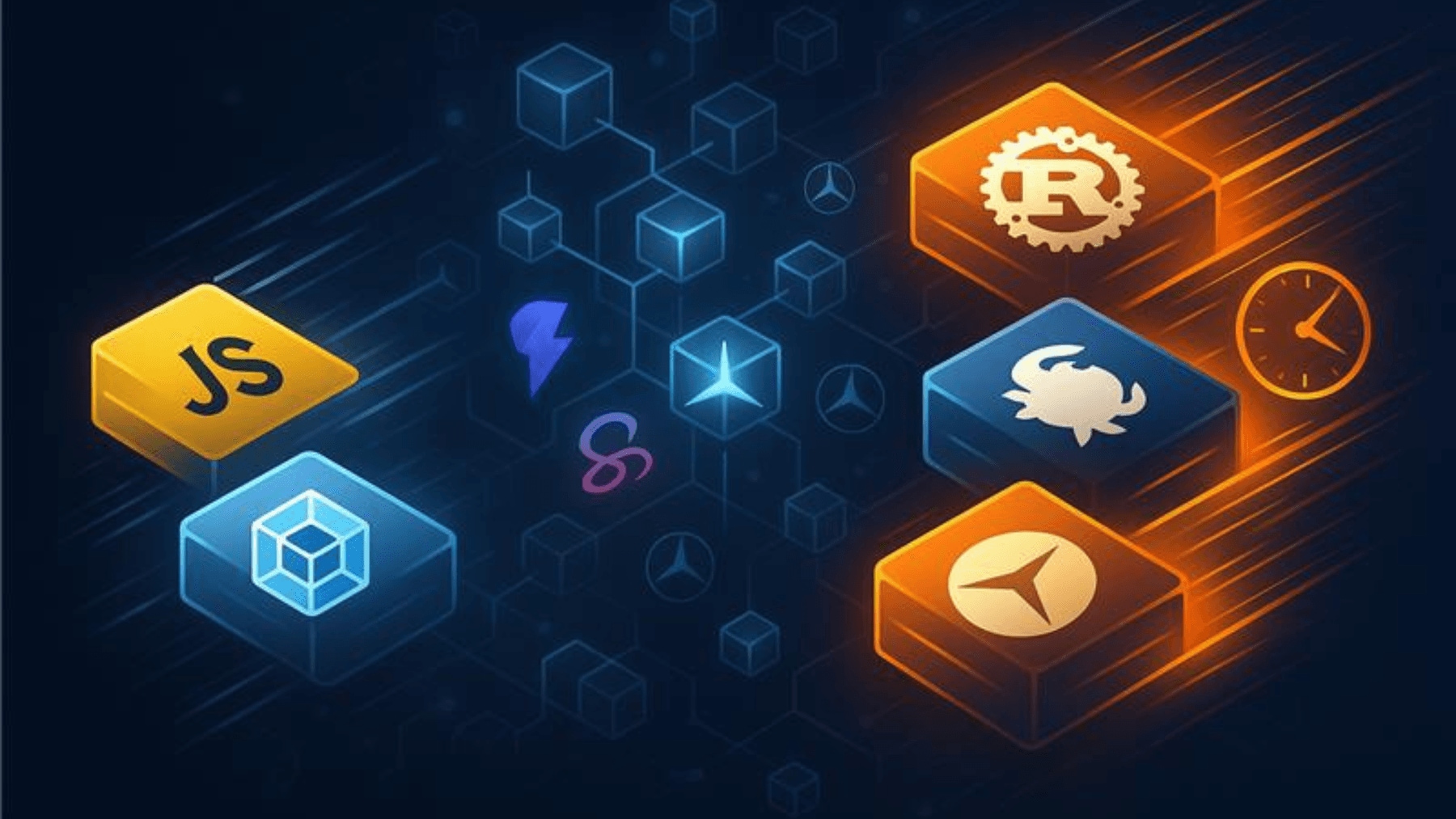
Pairing is daring
WHY PAIR PROGRAMMING SHOULD BE IN EVERY TEAM’S TOOLBOX
Pair programming is old news for most developers. It’s quite possible that you “paired” with a colleague before and might have had some good and some bad experiences. In this blog post, you will get a quick overview of pair programming. You will learn that there are lots of benefits and potential downsides. Additionally, there are some hints on the process and pitfalls to keep in mind. Finally, you will find a quick overview of remote collaboration tools.
BENEFITS OF PAIR PROGRAMMING
According to a study conducted by a Microsoft Research team [1], participating developers reported “fewer bugs”, the “spread of code understanding”, and “higher quality of code” as the main benefits of pair programming.
Fewer Bugs
In many work areas, the four-eyes principle allows teams to spot errors early on. Developers usually conduct code reviews before code goes out to production. Think of pair programming as giving a programmer a second pair of eyes. They might spot bugs right away, leading to reduced friction down the road. The earlier you spot a bug, the easier it is to fix.
@Saad Bin Akhlaq: After a pairing session, I have more confidence in pushing the code since 2 engineers have already gone over it.
Spread of Code Understanding
According to the Agile Alliance, a team that applies pair programming will gain "better diffusion of knowledge among the team, in particular when a developer unfamiliar with a component is pairing with one who knows it much better." You will notice a "better transfer of skills, as junior developers pick up micro-techniques or broader skills from more experienced team members." Furthermore, the Microsoft study highlights that "there is never only one person in the team who knows all the code".
In the paper "The Costs and Benefits of Pair Programming" [2] by Alistair Cockburn and Laurie Williams, they claim that "if [a] pair can work together, then they learn ways to communicate more easily and they communicate more often. This raises the communication bandwidth and frequency within the project, increasing overall information flow within the team."
@Jobrann Mous: I especially enjoy a pairing session when I am exposed to different topics, codebases, and coding practices.
Higher Quality Code
The authors of the Microsoft study state that pair programming helps to improve code quality "through more extensive review and collaboration." Also, "'Programming out loud' leads to a clearer articulation of the complexities and hidden details in coding tasks, reducing the risk of error or going down blind alleys", says the Agile Alliance.
In addition to that, a quantitative study at the University of Utah [3] showed that pairs not only completed their programs with superior quality, but they consistently implemented the same functionality as the individuals in fewer lines of code.
Critique of pair programming
In the same study from Microsoft, developers listed cost efficiency, scheduling, and personality clash as their biggest problems when applying pair programming.
Cost efficiency
Management most likely is in doubt about the efficiency of pair programming. In the Microsoft study "the number one problem reported with pair programming is cost. Two people are being paid to do the work of one." On paper, you halve the allocatable time of two developers. But there are studies suggesting that pair programming actually increases time spent by only 15% (and not 100%), while at the same time reducing the error rate by 15%. [2] Occasional pairing programming will balance out the cost with the benefits.
Scheduling
Yet another meeting? Calendars are already full and scheduling meetings is a pain? Pair programming will not improve the situation. If scheduling a spontaneous pairing session is hard, your team should review the number of meetings in general.
What worked well for the cross-functional engineering teams of Bertha and Mercedes Me Service apps, is a fixed pairing slot every two weeks. The engineers begin the 2 hours slot with a short alignment, check who is available, and what topics they can pair on. Then the pairs (or sometimes groups of more than two) start their sessions.
During sprint planning for Bertha, we schedule pairing sessions to tackle tickets with high estimations together.
The backend team of Reach Me is doing it differently. Instead of scheduling anything, they start their day with a Teams-call which they keep running in the background for most of the day. It simulates a being-together-in-the-office feeling and allows for spontaneous conversations, some of which lead to pair programming sessions.
Personality clash
Pair programming is not the best work mode for every problem. While some of us are happy to collaborate on a task and align with a colleague, others need alone time. They want to play around with different possible solutions, sketch something, etc.
Most programmers tend to shy away from collaborative tasks. They want to be on their own while coding. Practice (and constant nudging) is your only chance to convince introverted people to pick up pairing more often.
There are also big differences in the way people articulate themselves. Pairing a person who thinks longer before answering with a fast speaker might end up in a one-sided conversation. It's important to give everyone enough space. You don't need to rush anything.
It is an acquired taste
You sometimes hear "I need to get this done, I don’t have time for a pairing session". Or "it will take me half the time explaining the issue to my colleague before being productive". Please reconsider. True, pair programming comes with a cost. You have to set it up, agree on a work mode, explain the context. It adds cognitive overhead. Practice can mitigate most of that. If you are getting used to pair-programming it becomes a standard way of working within your team. Doing so will feel normal, and you will consider it for more and more assignments. Jumping on a pairing session with someone lacking the context should be the outlier.
HOW TO DO PAIR PROGRAMMING
4 simple tips for pair programming. Just give it a try.
Agree on topic and scope
There should be a common understanding of what the problem is, and a general direction of how to tackle it. Keep reminding each other when you are deviating too far from your goal. It’s easy to get lost. Now you have someone helping you to focus!
Pick your role, switch them
Usually, when sitting next to each other at one desk, there is one keyboard to share. This puts the person on the keyboard in a different position than the person next to them. The person who types – the "driver" – is more concerned about the coding details, types, syntax, formatting. The person off the keyboard – the "navigator" – can think about the bigger picture, e.g. abstraction layers, dependencies, potential refactorings, etc.
That situation changes when you are leveraging remote collaboration tools. All participants can now write to the current codebase, they can be "drivers" and "navigators" at the same time.
Regardless of the setup, you should keep all participants engaged by flipping through the two roles. This allows everyone to contribute to the lower-level and big-picture problems.
Acknowledge different pairing situations
You should always be aware of the circumstances and the setting of each session.
@Svitlana Piddubna: "Not all tasks are equally good for pairing, so I think it works best when someone sees a ticket that could be a good one for pairing and offers to work on it together"
Are you and your pairing partner on the same page about the issue? Can you both focus on the issue at hand? Does the schedule suit both of you?
Plan enough breaks beforehand. This allows accommodating for individual daily routines, habits, speed of thought, etc. Especially during a pandemic, we need to pay special attention to a flexible schedule (eg: no daycare!). Some people need their time thinking through things alone. Take a break from the session when needed. Pair programming doesn’t mean you are bound to each other for the whole session.
Consider also the implicit or explicit power dynamic within a pair. An example: You are the most experienced developer in your team. Your pairing partner is a junior member with knowledge of the context, but lacking coding experience. As a senior, you have the responsibility to motivate, acknowledge, and drive the conversation positively. Don’t be condescending, don’t turn it into a lecturing lesson. You only get the inspiration of your counterpart flowing when it is a mutual experience.
Programming out loud
Reflection is an important step in learning. You are allowing your brain to streamline your thoughts on a topic. More often than not, only when attempting to write down or articulate, do you realize that you haven’t understood a problem. Now imagine you are articulating and reflecting on your current assignment. You gain an improved understanding of the topic and your pairing partner gains insights into your thought process.
The Agile Alliance advised, that "'Programming out loud' leads to a clearer articulation of the complexities and hidden details in coding tasks, reducing the risk of error or going down blind alleys."
**PRO TIP:** Think of TV chefs and how they orate every detail of their process.
Remote pair programming
The obvious downside of remote pair programming is the fact that you can’t grab the keyboard and switch between navigator and driver. The "navigator" is not looking at the same monitor as the person who "drives". To overcome these barriers, a variety of tools can help.
The easiest and most intuitive solution is simple screen-sharing. If you need more elaborate features, look at tools like JetBrain’s Code With Me and Microsoft’s Live Share. They come with plenty of features to accommodate for a sophisticated pairing session.
Microsoft Teams
At Mercedes-Benz.io the main tool for remote collaboration is Microsoft Teams. Its screen sharing feature already allows for a great remote pairing environment. You set up a call, share your screen, and go. There is even a function to take over the controls of the shared screen. This can be helpful when a topic is hard to articulate or to switch roles between "driver" and "navigator".
JetBrains Code With Me
The Code With Me service [4] allows any JetBrains IDE user to share and open up their codebase for collaboration with remote colleagues. It works across almost all their IDEs (Android Studio coming soon). You can give your colleagues instant access to your current project. Up to 10 developers can join one session, and collaborate on one codebase. Especially for a mob-programming session, this is quite a valuable solution. Each participant can choose to either sync with (or follow) the "driver" and see what they are seeing, or work on their code area, all within one session.
Visual Studio Live Share
Visual Studio and Visual Studio Code offer a similar service, Live Share [5]. You can start a collaboration session and share a link to it for others to join. You have fine-grained control over the permissions the session members get.
Conclusion
Pair programming is an important tool in the arsenal of software engineering teams. It’s a great way to share knowledge, reduce friction, and increase communication bandwidth. Most of us are currently working remotely. Introducing collaborative work methodologies like pair programming helps you to cope with that. Remote collaboration tools like screen sharing make it super easy to do. Now that you know more about pair programming, try it out more. You will be surprised about the positive outcome!
Reference
[1] https://www.microsoft.com/en-us/research/wp-content/uploads/2016/02/esem-begel-2008.pdf
[2] https://collaboration.csc.ncsu.edu/laurie/Papers/XPSardinia.PDF
[3] https://web.archive.org/web/20041129085715/http://www.cs.utah.edu/~lwilliam/Papers/ieeeSoftware.PDF
[4] https://www.jetbrains.com/code-with-me/
[5] https://visualstudio.microsoft.com/de/services/live-share/
Related articles

Catarina Marques, Mariana Pereira
What OFFF Barcelona Taught Us About Design, Emotion, and Creative Risk
Every year, OFFF Barcelona gathers some of the boldest, brightest, and most unapologetically creative minds in the design world. It’s a space where visual artists, designers, and storytellers connect; not just through stunning work, but through the philosophies and emotions behind it.
May 30, 2025

Bernardo Oliveira
How can modern tooling save Mercedes-Benz.io engineering time?
In today's fast-evolving JavaScript ecosystem, modern tooling plays a pivotal role, influencing not just how we code but how much time and money we spend doing it.
May 16, 2025

Porfírio Ribeiro, Thiago Martins
What Vue.js Amsterdam Taught Us About Tech, Community, and Growth
Every year, Vue.js Amsterdam gathers developers from around the world for two days of talks, learning, connection, and lots of fresh energy. It’s a chance to zoom out from day-to-day tasks and dive into what’s shaping one of the most loved JavaScript frameworks — and this year, a few of our MB.ioneers were there to experience it firsthand.
May 9, 2025